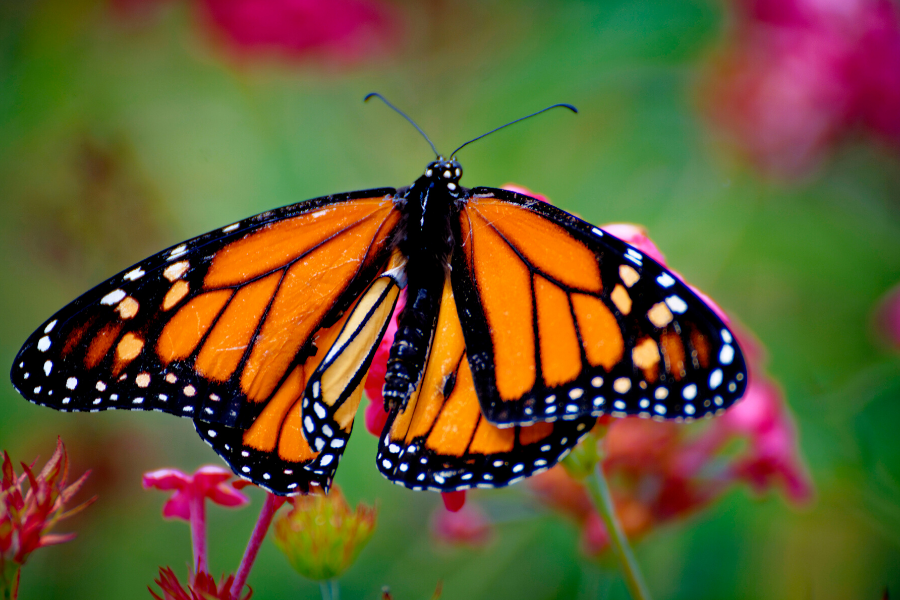
June 22 to 28 marks National Pollinator Week, and to celebrate, we encourage you to explore your yard or neighborhood, look for pollinators in action, and log those observations on iNaturalist. Project Stay Planted, a citizen–science initiative launched by Naples Botanical Garden in April, used iNaturalist to document plants, fungi, and lichen. Though the project has concluded, that certainly doesn’t mean you can’t go back to your favorite plants and see what pollinator helps them along.
But what to look for?

A pollinator is anything that helps move pollen from the male part of the plant, the stamen, to the female part, the stigma. The two parts are sometimes found in the same flower and sometimes not, depending on the plant. Most of us are familiar with bees and butterflies as pollinators, but did you know bats, beetles, wasps, and birds perform the same task? Watch their behavior, and consider how they might be spreading pollen as they move about their habitats.
The importance of pollinators can’t be understated. Because plants are stationary, they need help carrying their genetic material to maintain their populations. Some 75 percent of flowering plants rely on pollinators for reproduction, including crops such as berries, almonds, and squashes. Pollination by honey bees and other insects pumps tens of billions of dollars into the U.S. economy each year by pollinating crops, according to the U.S. Fish and Wildlife Service.
Observing pollinators is a great way to continue contributing to the global dataset that is in iNaturalist. These observations indicate when pollinators are active throughout the year and what plants they may prefer. The information collected using iNaturalist could shed light on pollinator ranges and if they’ve changed, what plants pollinators are visiting, and other information that can help determine if an ecosystem is healthy — and sound alarm bells if it’s not. After all, we cannot protect what we do not understand.
About the Authors
 Tatiana Castro is an Education Programs Assistant at Naples Botanical Garden. As a Florida native, her favorite natural area to visit is the beach at any time of the year. When she isn’t at the Garden, she enjoys messy but creative hobbies like crafting and cooking.
Tatiana Castro is an Education Programs Assistant at Naples Botanical Garden. As a Florida native, her favorite natural area to visit is the beach at any time of the year. When she isn’t at the Garden, she enjoys messy but creative hobbies like crafting and cooking.
 Patrick Deja is an Education Programs Assistant at Naples Botanical Garden. When not at the Garden, he loves to spend time with his wife and daughter. He also enjoys traveling and learning, whether it is about plants, history, language, or science.
Patrick Deja is an Education Programs Assistant at Naples Botanical Garden. When not at the Garden, he loves to spend time with his wife and daughter. He also enjoys traveling and learning, whether it is about plants, history, language, or science.

